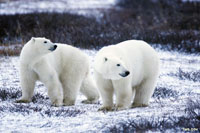14.4: Physical Factors - Temperature
- Page ID
- 10365
\( \newcommand{\vecs}[1]{\overset { \scriptstyle \rightharpoonup} {\mathbf{#1}} } \) \( \newcommand{\vecd}[1]{\overset{-\!-\!\rightharpoonup}{\vphantom{a}\smash {#1}}} \)\(\newcommand{\id}{\mathrm{id}}\) \( \newcommand{\Span}{\mathrm{span}}\) \( \newcommand{\kernel}{\mathrm{null}\,}\) \( \newcommand{\range}{\mathrm{range}\,}\) \( \newcommand{\RealPart}{\mathrm{Re}}\) \( \newcommand{\ImaginaryPart}{\mathrm{Im}}\) \( \newcommand{\Argument}{\mathrm{Arg}}\) \( \newcommand{\norm}[1]{\| #1 \|}\) \( \newcommand{\inner}[2]{\langle #1, #2 \rangle}\) \( \newcommand{\Span}{\mathrm{span}}\) \(\newcommand{\id}{\mathrm{id}}\) \( \newcommand{\Span}{\mathrm{span}}\) \( \newcommand{\kernel}{\mathrm{null}\,}\) \( \newcommand{\range}{\mathrm{range}\,}\) \( \newcommand{\RealPart}{\mathrm{Re}}\) \( \newcommand{\ImaginaryPart}{\mathrm{Im}}\) \( \newcommand{\Argument}{\mathrm{Arg}}\) \( \newcommand{\norm}[1]{\| #1 \|}\) \( \newcommand{\inner}[2]{\langle #1, #2 \rangle}\) \( \newcommand{\Span}{\mathrm{span}}\)\(\newcommand{\AA}{\unicode[.8,0]{x212B}}\)
Temperature
Temperature governs the rate chemical and metabolic rates especially in cold-blooded organisms.
Many organisms are sensitive to changes in temperature and this results in species zonation.
Example—Different species of sharks: Sharks can be classified as tropical, temperate, or polar, depending on the surface temperature of the ocean region they inhabit.
| Tropical sharks live year round in warm temperature waters (21° - 30° C, 69.8° - 86° F). Examples include nurse shark, the tiger shark, and the bull shark. They are only comfortable in warm waters where food is plentiful, so they remain there year-round without migrating. |
|
Sharks in Temperate regions tolerate temperatures within a range (10°-21°C, 50-69.8° F). Sharks in temperate regions tend to migrate south in the winter and north in the summer and as their food sources move up and down the coast. |
| Sharks in Polar regions always stay in colder waters (below 5° C, 41° F). For example, Greenland sleeper shark is adapted to living under ice floes and will not migrate. |


| Temperature controls an organism's metabolism |
| For poikilothermic (or cold blooded) organisms: every 10° C rise in temperature doubles their metabolism. Most fish, reptiles, and invertebrates are cold blooded. |
| For homeothermic (or warm blooded) organisms: metabolism increases with decreasing temperature to stay warm. Only mammals and birds are warm blooded. |
| Some species have various degrees of thermo regulation - ability to raise or lower their body temperature. An example in fish is Opah an Blue Fin Tuna. |



